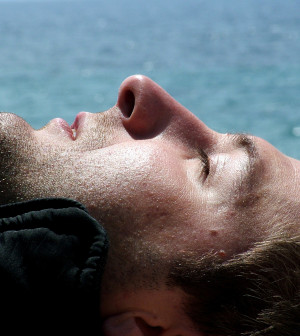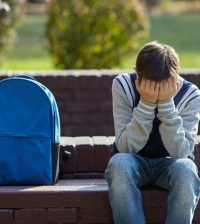- Fragments of Bird Flu Virus Found in 1 in 5 Milk Samples
- Clients Got HIV Through ‘Vampire Facial’ Microneedling Treatments
- Take the Stairs & Step Up to Longer Life
- ‘Drug Take Back Day’ is Saturday: Check for Leftover Opioids in Your Home
- Loneliness Can Shorten Lives of Cancer Survivors
- A Stolen Dog Feels Like Losing a Child, Study Finds
- Healthier Hearts in Middle Age Help Black Women’s Brains Stay Strong
- Better Scans Spot Hidden Inflammation in MS Patients
- Which Patients and Surgeries Are ‘High Risk’ for Seniors?
- Vancomycin May Be Losing Strength Against Common Deadly Infection
PTSD May Affect Boys, Girls Differently, Brain Scans Show

Post-traumatic stress disorder (PTSD) affects the brains of girls and boys in different ways, a new study suggests.
Researchers used MRI scans to examine the brains of 59 children, aged 9 to 17. The participants included 30 kids with PTSD and 29 without the disorder (the “control” group).
Girls and boys in the control group had no differences in brain structure, the researchers said. But among those with PTSD, girls and boys showed differences in one part of the insula — an area of the brain involved in emotion and empathy.
This brain area was larger in boys with PTSD than in other boys, and was smaller in girls with PTSD than in the control group girls, according to researchers from the Stanford University School of Medicine in California.
The findings, published online Nov. 11 in the journal Depression and Anxiety, are believed to be the first of their kind, the study authors noted in a university news release.
“The insula appears to play a key role in the development of PTSD,” said senior author Dr. Victor Carrion, a professor of psychiatry and behavioral sciences at Stanford.
“The difference we saw between the brains of boys and girls who have experienced psychological trauma is important because it may help explain differences in trauma symptoms between sexes,” he added.
Previous studies have found that girls are more likely than boys to develop PTSD after undergoing traumatic stress. The symptoms include: flashbacks; withdrawal from people, places and things that call the trauma to mind; and problems sleeping and concentrating.
Study author Megan Klabunde is an instructor of psychiatry and behavioral sciences. “It is important that people who work with traumatized youth consider the sex differences,” she said.
“Our findings suggest it is possible that boys and girls could exhibit different trauma symptoms, and that they might benefit from different approaches to treatment,” Klabunde explained in the news release.
More information
The U.S. National Center for PTSD has more on how the disorder affects children and teens.
Source: HealthDay
Copyright © 2024 HealthDay. All rights reserved.









